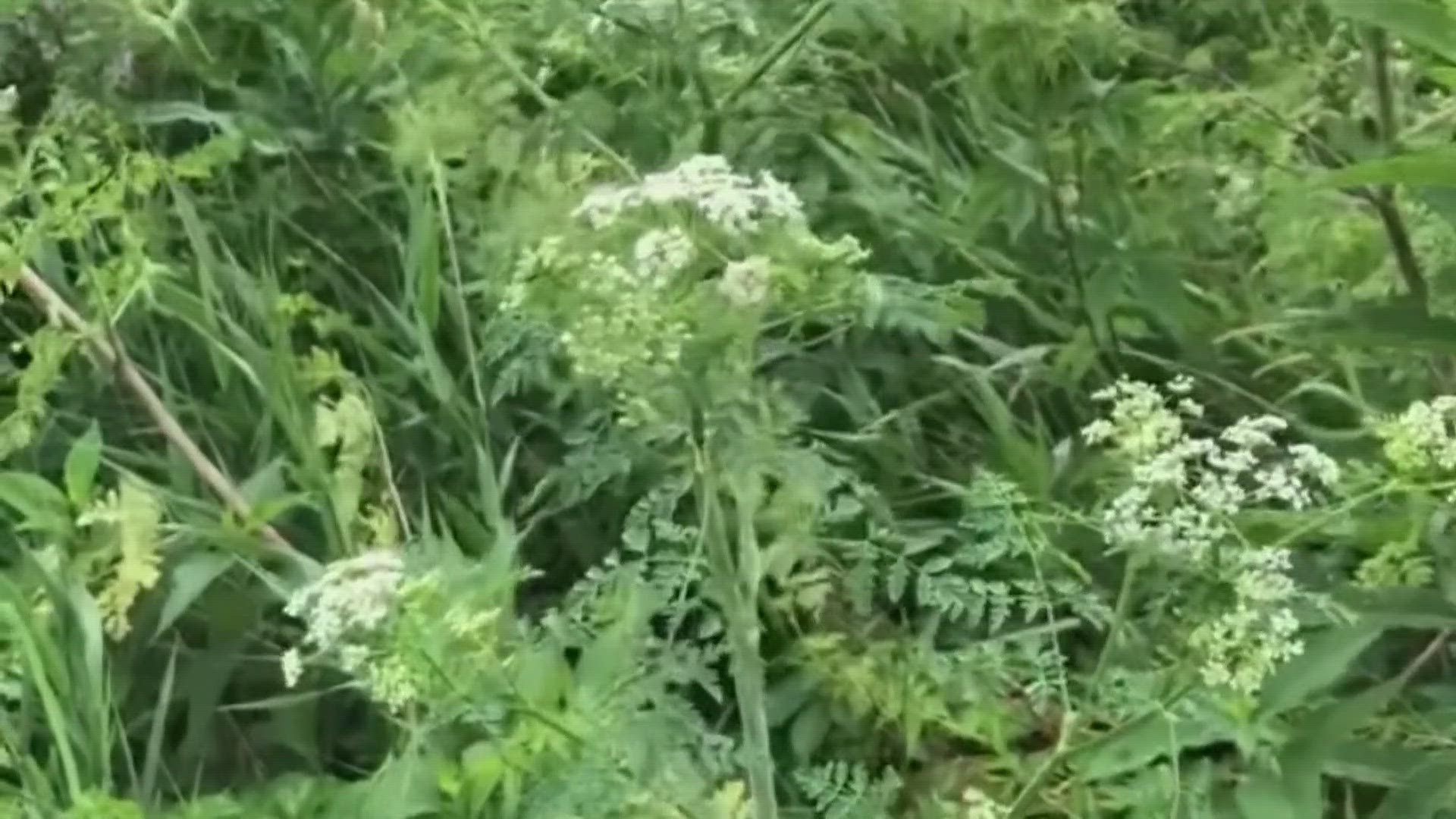COLUMBUS, Ohio — Poison hemlock, one of the most poisonous plants known to man, has been slowly spreading throughout Ohio.
This plant tends to grow alongside bike pathways, near park edges and fields, and in dense colonies near the freeway.
According to the Cleveland Clinic, “Poison hemlock isn’t like poison ivy or poison oak. You usually won’t get a rash from touching it. Most of the time, hemlock is only poisonous if ingested. However, you should still be careful when handling poison hemlock.”
In addition to ingestion, hemlock poisoning can occur after the toxins enter your bloodstream through a cut or through the eyes or nose.
What does poison hemlock look like?
The plant has a white root and a hollow stem with purple splotches. It has small, white flowers with petals that grow in an umbrella-shaped cluster.
Poison hemlock can grow anywhere between two to 10 feet tall and it greatly resembles Queen Anne’s lace, wild parsnip, wild carrots and wild parsley.
What are the symptoms of hemlock poisoning?
- Sweating
- Vomiting
- Dilated pupils
- Excess salivation
- Rapid heartbeat
- High blood pressure
- Restlessness or confusion
- Muscle weakness and muscle twitches
- Tremors and seizures
How to prevent hemlock poisoning
- Safely remove it by digging it out in small patches, ensuring to remove the roots
- Don’t cut, mow or burn it
- After removal, place plants in plastic garbage bags and put them in the trash.
- Always wear a face mask, long sleeves and gloves if handling poison hemlock
If you believe you may have come in contact with poison hemlock and are displaying symptoms, seek immediate emergency medical attention.

